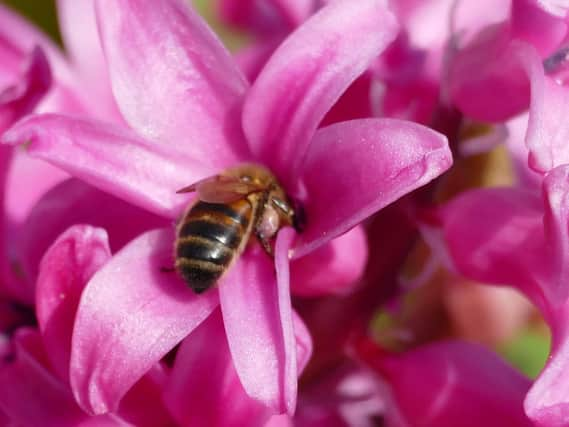The first spring inspection is a "crucial" moment for beekeepers as they discover the health of their hives after winter


For a beekeeper there are few more critical moments in the year than the first inspection in spring.
All through the winter it is wise to disturb honeybees as little as possible as you don’t want to let lots of cold air get into the hive. As soon as we got an early warm afternoon we decided to do a proper inspection as rapidly as we could.
Advertisement
Hide AdAdvertisement
Hide AdBefore starting we like to take a look at what the bees are doing as it gives lots of clues as to how things are going. Around the entrance of the first hive, things were looking good. There were lots of busy bees coming and going with bright orange baskets of pollen on their back legs.
Sure enough, when we looked inside we found all was the way it should be and we had the beginnings of the new season’s bees being raised by the tired old workers who had shivered their way through the winter.
The next hive was less promising. Around the entrance there were some bees flying around but they didn’t seem to be working to such a clear purpose. Our worst fears were confirmed when we looked inside. There were a couple of thousand bees in the hive but not one of the frames they were crawling over showed any sign a queen was laying eggs.
That may sound like a lot of bees but we were hoping to see two or three times that number and the absence of a queen doomed the collective to slowly die out as the old bees reached the end of their lives without any children to replace them.
Advertisement
Hide AdAdvertisement
Hide AdOptions are stark when that happens. You can either leave the bees to fade away or you can intervene to combine those bees with another hive in the hope that you can make one really strong collective. We chose that option.
It isn’t the easiest of jobs. If you just plonk one hive of bees on top of another they will start fighting and the result is a serious battle to the death.
What has to be done is to place a sheet of newspaper with a few small holes in it between the two hives so that the occupants can get used to each other’s smell before they chew their way through the paper.
There are easier jobs than juggling a box full of bees and a sheet of The Yorkshire Post on a windy day. It only takes one gap between the edges of the paper and the box you are carrying from the weak hive and the whole exercise is a failure.
Advertisement
Hide AdAdvertisement
Hide AdThe task isn’t made any easier by having a number of angry bees trying to find a gap in your bee suit to pay you back for disturbing them on a rare warm day when they’d rather have been searching for early flowers.
Nevertheless, we managed the trick and got the bulk of the bees neatly combined onto one strong hive.